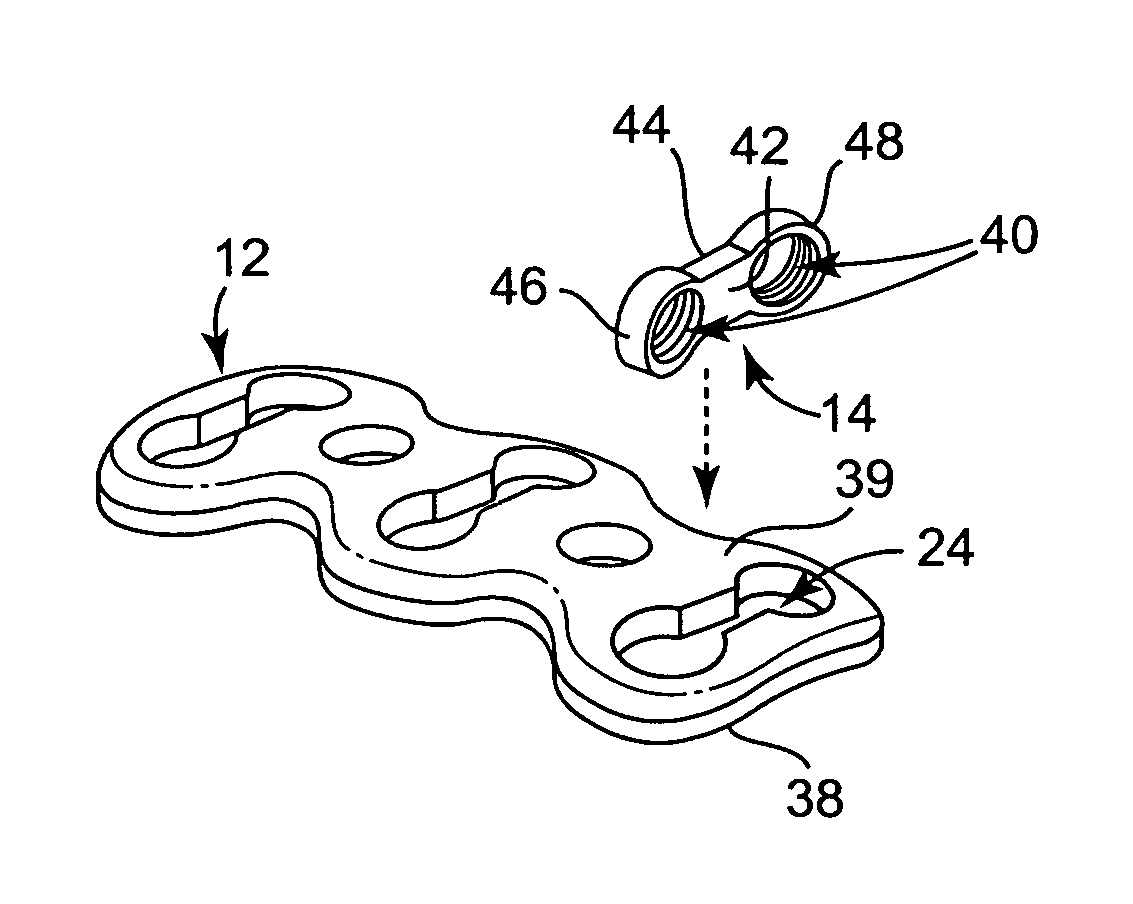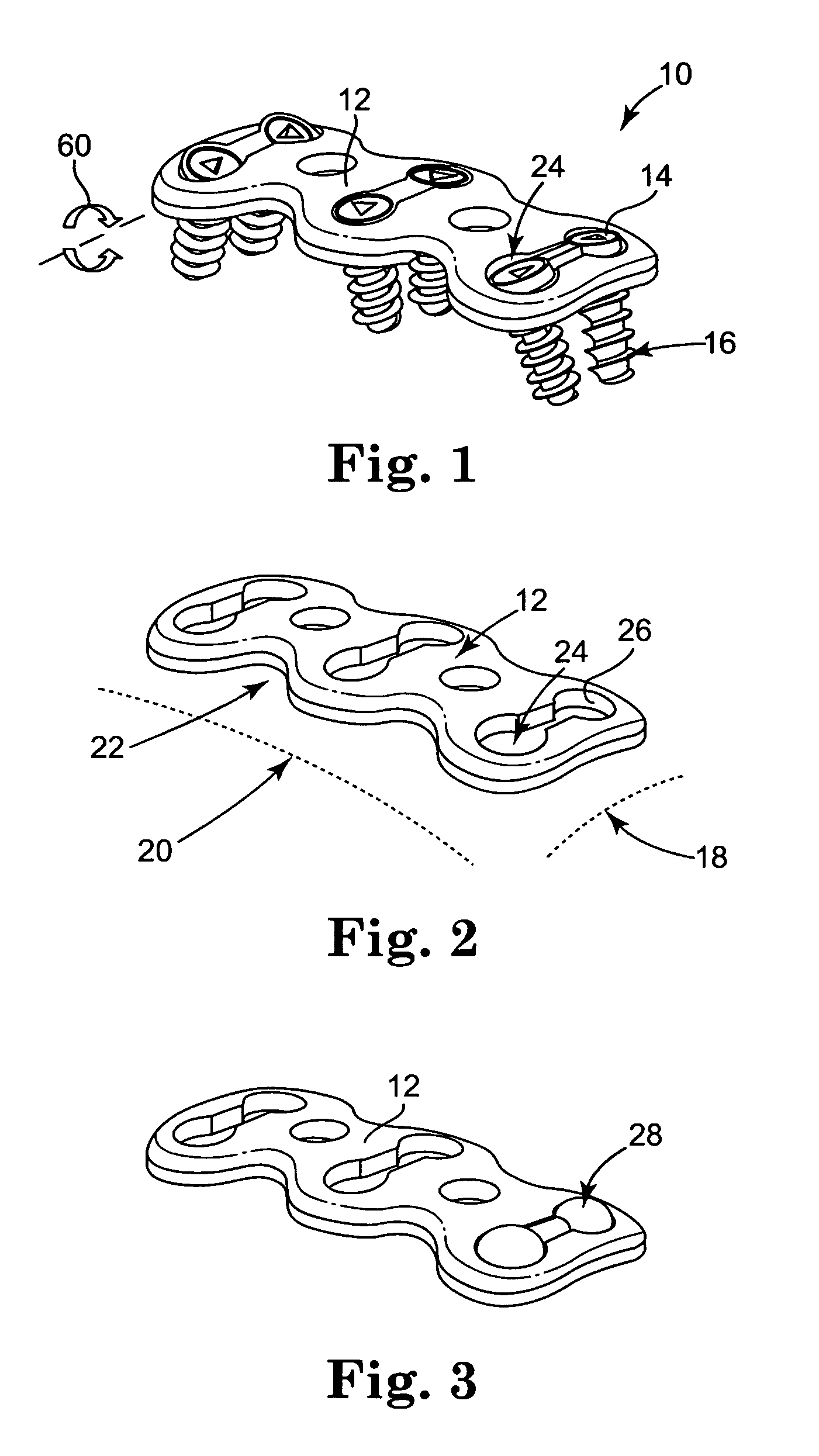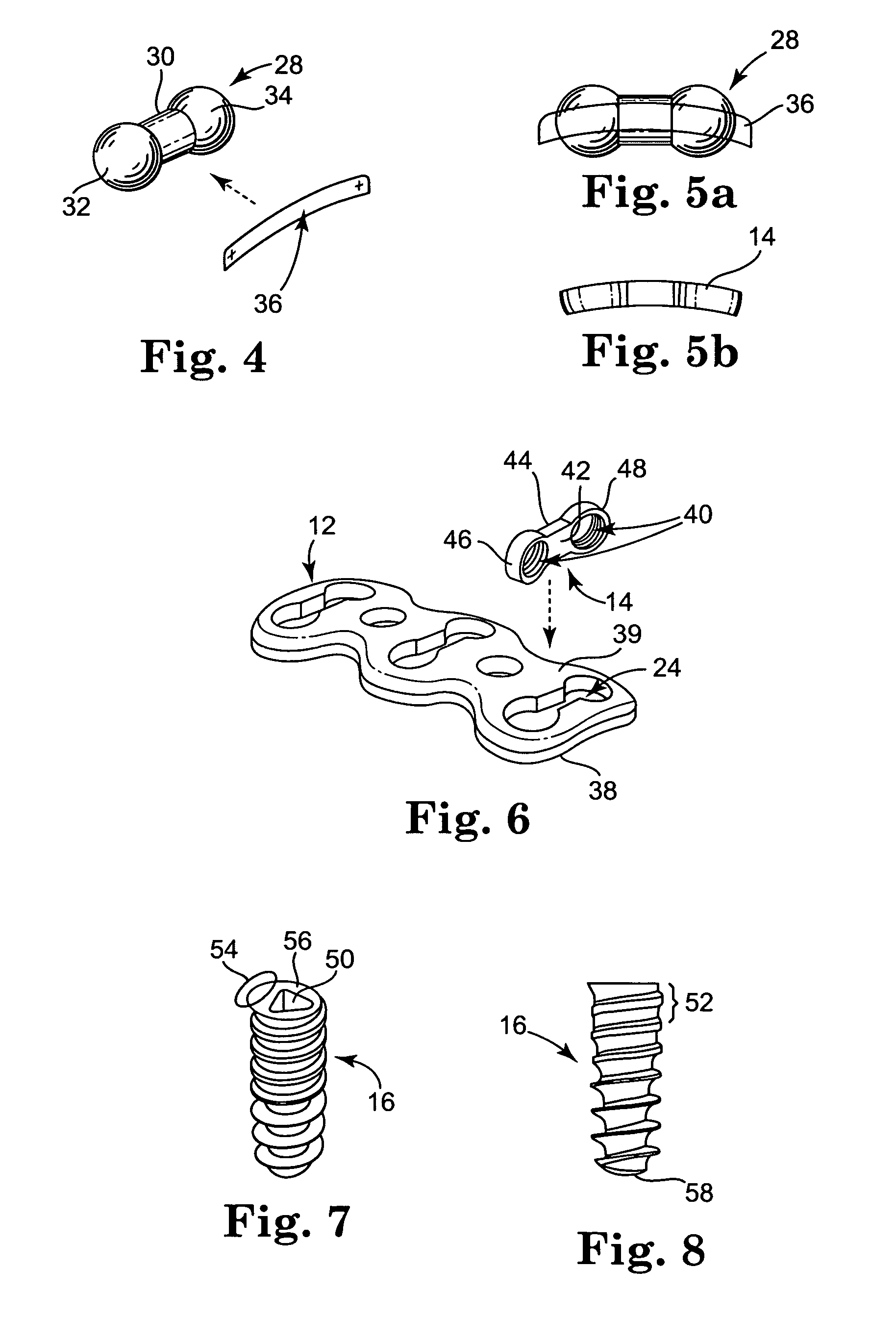Cervical plate system having an insertable rotating element
a cervical plate and insertable technology, applied in the field of cervical plate, can solve the problem that the same rotating element cannot be removed from the slot, and achieve the effect of reducing the number of components, simplifying the surgical procedure, and reducing the difficulty of manipulation
- Summary
- Abstract
- Description
- Claims
- Application Information
AI Technical Summary
Benefits of technology
Problems solved by technology
Method used
Image
Examples
Embodiment Construction
[0025]Referring now to the Figures, wherein the components are labeled with like numerals throughout the several Figures, and initially to FIGS. 1-3, one preferred configuration of a cervical plate system 10 is illustrated. System 10 generally includes a cervical plate 12, at least one rotating element 14, and one or more bone screws 16 for each corresponding rotating element 14. Cervical plate 12 includes a first curvature 18 that is designed to closely match the curvature of the vertebrae in the cervical spine and a second curvature 20 that is designed to closely match the lordotic curvature of the cervical spine. The cervical plate 12 is generally rectangular, and is provided with generally smooth and / or curved edges to minimize discomfort and injury to the patient that might occur with sharp or rough edges. However, the periphery of the plate may have a different general shape, such as oval or elliptical, or may have a more irregular shape. In any case, the cervical plate prefer...
PUM
| Property | Measurement | Unit |
|---|---|---|
| diameter | aaaaa | aaaaa |
| width | aaaaa | aaaaa |
| length | aaaaa | aaaaa |
Abstract
Description
Claims
Application Information
 Login to View More
Login to View More - R&D
- Intellectual Property
- Life Sciences
- Materials
- Tech Scout
- Unparalleled Data Quality
- Higher Quality Content
- 60% Fewer Hallucinations
Browse by: Latest US Patents, China's latest patents, Technical Efficacy Thesaurus, Application Domain, Technology Topic, Popular Technical Reports.
© 2025 PatSnap. All rights reserved.Legal|Privacy policy|Modern Slavery Act Transparency Statement|Sitemap|About US| Contact US: help@patsnap.com



